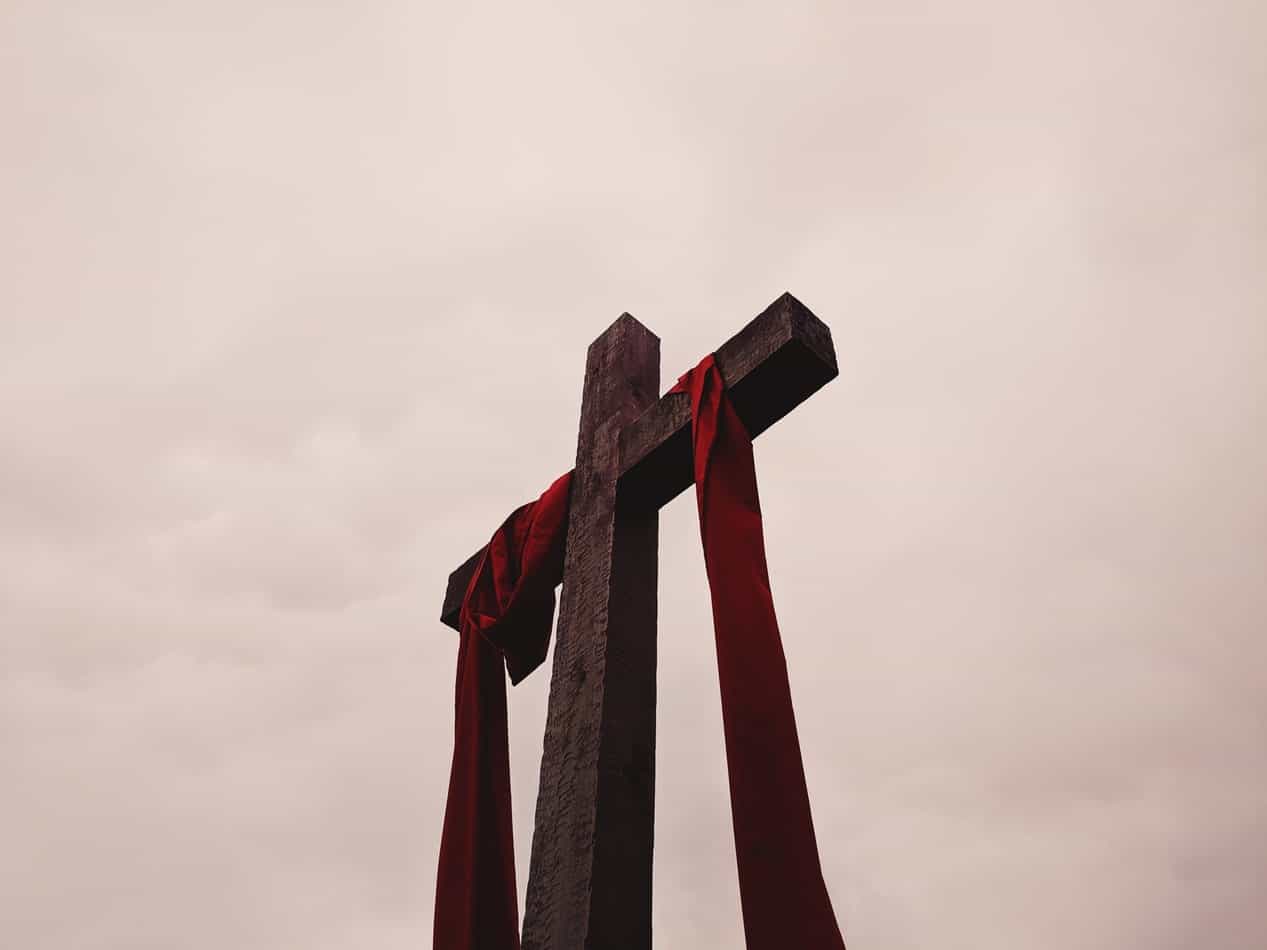Easter and the Big Picture
Kids need to understand more about the resurrection than Sunday school basics, given the challenges they’ll face in today’s world.
When I think back to Easter as a child, I remember all the Sunday school classes—coloring cross pictures, making empty tomb crafts, eating Easter-themed snacks and singing celebratory songs. There is no doubt we all learned the central story of how Jesus died on the cross and was raised from the dead three days later. Indeed, the events of that week are crucial to our faith. As the apostle Paul says, “If Christ has not been raised, our preaching is useless and so is your faith” (1 Corinthians 15:14)!
Despite the fact that the resurrection is foundational to Christianity, kids often have an underdeveloped “Sunday school” understanding of how Easter fits into the bigger picture of their faith. They may know that on Easter we celebrate that Jesus was raised from the dead, but they may not be able to articulate why it really matters, or why there’s good reason to believe it happened. This limited understanding leaves them unprepared for the faith challenges they’ll face in today’s world. In some cases, those challenges will even come from people who say they are Christian but reject the resurrection as a real event.
To better equip kids for these challenges—and ultimately deepen their faith—we can teach them how the resurrection fits into its wider biblical context. That bigger picture helps give our kids a confident faith when they’re surrounded by a culture that sees their beliefs as ridiculous.
Backstory: Creation and the Fall
In Genesis 1, we read that God created everything and that it was “very good.” The first humans, Adam and Eve, experienced perfect fellowship with God in the Garden of Eden. God told them they could enjoy everything in the Garden except for fruit from the tree of the knowledge of good and evil. If they ate from it, they would die. Eve was eventually tempted by the evil one and ate fruit from the tree, and then Adam ate from it as well. With their disobedience, sin entered the world for the first time—an event known as the fall. The rest of Scripture is the story of God’s plan to redeem humankind from its slavery to sin and ultimately restore creation.
It’s important to help kids understand how the fall resulted in the broader problem of sin for all of humanity. This understanding makes Easter personal, and not just a solution for a distant event in history. Kids should understand that:
Sin means the breaking of God’s moral law (1 John 3:4).
All people have this law written on their hearts (Rom. 2:14–15) and are guilty of breaking it (Isa. 64:6; Rom. 3:10, 23)—not just Adam and Eve!
When we sin, we rebel against God, and our sins relationally separate us from him (Isa. 59:2).
God’s punishment for sin is death (Rom. 6:23).
The implication of these facts is that humanity is in a grim situation—every one of us is condemned. This is the bad news that we must comprehend in order to truly appreciate the good news of Easter. That said, this is also where misunderstandings start to take place. Skeptics often ask, “Why wouldn’t God simply forgive us?” The key to this answer is in understanding that God is both perfectly loving and perfectly just. To help kids see why this matters so much, imagine with them that there’s a judge in your city who regularly lets murderers go free without penalty because of his “love” for them. What would happen? There would be a public outcry at the injustice; we instinctively understand that love without justice is not love at all. God must punish sin to remain consistent within his perfectly loving and just nature.
This is the theological backdrop that brings us to the next key Easter event: Jesus’s life and death.
Jesus’s Life and Death
There’s an important difference between the imaginary judge who sets criminals free and God: God is both the judge and the offended party. That means he’s in the unique position to both set the penalty and absolve humans of their guilt as he sees fit within his just character—and he lovingly decided to make provision for our forgiveness. For hundreds of years before Jesus was born, God promised the Jewish people that a Messiah was coming—a savior of the world who would be “pierced for our transgressions” (Isaiah 53:4-6). Jesus fulfilled dozens of Old Testament messianic prophecies, demonstrating that he was this promised Messiah who would take away the sins of the world. Payment for sin was required by God’s justness, but God made that payment himself through Jesus’s death on the cross in our place.
Skeptics often claim that if this were true, it would mean we have a bloodthirsty God who seeks human sacrifice. But this is a misunderstanding on multiple levels. To show kids the biblical problems with such claims, it’s helpful to teach them “three Ps” of his death:
Jesus’s death was planned: Jesus predicted his violent death and resurrection multiple times; he said he must suffer and die (Luke 9:22). This shows Jesus didn’t just happen to end up in the wrong hands. He knew this was part of a plan.
Jesus’s death was purposeful: Jesus didn’t only know that he would die, but also why he would die. He said, “The Son of Man did not come to be served, but to serve, and to give his life as a ransom for many” (Mark 10:45). A ransom is a payment to release someone from something. Jesus came to release us from sin by paying for our debt.
Jesus’s death was personal: Jesus wasn’t forced to die but rather personally chose to lay down his own life (John 10:11-15).
The fact that Jesus’s death was planned, purposeful, and personal shows he wasn’t a helpless victim sacrificed by God. Jesus, being fully God himself, gave his own life as part of a rescue plan for humanity.
Jesus’s Resurrection
If I told you my coffee mug walked around my computer on its own this morning, you would rightly question the truth of that claim, even if you believe God exists and can choose to miraculously move mugs. Many skeptics, however, would say that the claim of a resurrection is no different than a claim of a walking coffee mug—they’re both unreasonable beliefs without evidence. But it’s important to understand that the resurrection is an entirely different kind of miracle claim for two reasons.
First, it’s a miracle claim with significant historical evidence. Although a discussion of this evidence is beyond what can be covered here, it’s important to know that the vast majority of scholars who study the resurrection—including non-Christians—agree that Jesus’s disciples 1) claimed the risen Jesus appeared to them and 2) were transformed from fearful individuals who abandoned him at his execution into bold proclaimers of the resurrection. The historical evidence shows that they were willing to suffer and die to proclaim the message they agreed was true: Jesus had risen from the dead.
Second, whereas a walking coffee mug would be a miraculous event with no apparent purpose, the resurrection would be a miraculous event in a theological context where we might even expect God to act. This is where our background understanding—beginning with creation and the fall—becomes so important for grasping the significance of Easter. With that context in mind, kids should understand that:
Jesus’s resurrection validated his claims to divinity. No mere human can choose to be resurrected. Only someone who is truly God, and therefore has power over death, can do that. The resurrection was the ultimate validation of who Jesus claimed to be—the Messiah himself.
Jesus’s resurrection confirmed we are no longer in our sins. Acts 17:30-31 says that the resurrection is “proof” that God has “set a day when he will judge the world with justice by the man he has appointed.” Those who trust in Jesus’s sacrifice as payment for their sins will be found righteous on that day (Romans 8:1).
Jesus’s resurrection assures us that we, too, will be raised from the dead. Jesus’s resurrection is God’s “pledge” that we will be raised from death to eternal life (1 Corinthians 15:20-23). Our lost fellowship with God will finally be restored.
Given these points, it’s evident why Paul said that our faith is useless if Jesus has not been raised. We would be putting the trust for our eternal life in someone who was neither able to conquer death himself nor able to validate his claims to divinity in the ways he said he would. We would still be waiting for the promised Messiah to take away the sins of the world! But because Jesus was raised from the dead, we can place our faith in him as Lord and Savior with the full confidence that we will inherit eternal life, having been made righteous by his sacrifice on the cross. The truth of Easter changes everything.




















